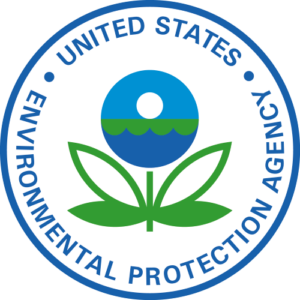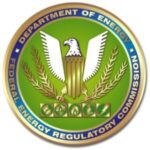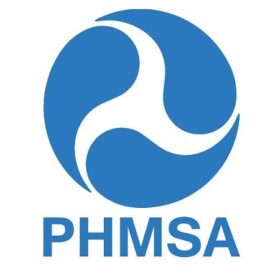
EPA proposed a rule for the mandatory reporting of greenhouse gases (hereinafter referred to as the GHG Reporting Rule) in the Federal Register on April 10, 2009. The GHG Reporting Rule revises a number of mobile source rules in Title 40 of the Code of Federal Regulations (40 CFR) and stationary source requirements in 40 CFR Part 98 (a new part to the CAA). EPA provided a 60 day comment period, no extension was granted. INGAA comments were filed on June 9, 2009.
Executive Summary of Comments
INGAA’s members share EPA’s desire to collect accurate, reliable and reasonably complete data on greenhouse gas (GHG) emissions. In fact, INGAA’s members have worked with EPA to develop improved tools for collect emissions data. INGAA’s members also understand EPA’s desire to improve the quality of data on fugitive emissions of methane at compressor stations along natural gas pipelines. Nevertheless, and with all due respect, the direct measurement program detailed in proposed Subpart W will provide inferior data, and will do so at the inordinate cost of directly measuring emissions from thousands of individual components at every compressor station.
INGAA has developed an alternative approach that combines state-of-the-art operations information with recognized statistical sampling techniques to produce superior data at a fraction of the cost. Within each source category covered by Subpart W, the alternative approach focuses on the components known to generate the bulk of fugitive emissions. These components are examined at a statistically derived sample of sources to develop company-specific emission factors that, in turn, are used to calculate reported fugitive emissions.
INGAA’s alternative is technically sound, generates superior data and requires a fraction of the time and expense that would be required under the direct measurement proposal. Adoption of INGAA’s alternative is imperative.
INGAA supports a number of key provisions of the proposed rule, particularly: (1) setting the reporting threshold at 25,000 metric tons of CO2-e per year; (2) excluding natural gas pipeline segments from Subpart W; (3) using facility-based reporting; (4) assigning to local distribution companies the burden for reporting emissions from natural gas consumption; (5) permitting self-certification; (6) allocating reporting requirements on both downstream and upstream sources; (7) determining that sources do not have to report their electricity purchases; (8) basing reports on actual emissions, even if estimated, as opposed to potential emissions; and, (9) refraining from delegating data collection and enforcement authority to individual states.
INGAA urges EPA to defer implementation of this rule for one year, with data collection beginning January 1, 2011, and the first set of reports due in 2012. An extension is particularly appropriate for the natural gas transmission industry, which is being asked to adopt a wide array of procedures that have never been in place before. On a related note, reporting should be deferred until EPA and the affected public can develop and deploy a standard electronic reporting protocol. The deadline for filing annual emissions reports should be June 30th, not March 31st, in recognition of the significant number of environmental reports that are already due each March 31st.
INGAA opposes the “once in always in” reporting requirement. Facilities that fall below the reporting threshold for three straight years should be relieved from further reporting.
At present, the only way to be certain that a Subpart W facility is not subject to emissions measurement and reporting is conduct emissions measurement. EPA needs to adopt a de minimis rule to address this problem.
While adopting INGAA’s alternative approach to calculating fugitive emissions will address many issues with Subpart W, a few items remain:
ª The monitoring and measurement requirements in Proposed Section §98.234 cannot be implemented as proposed due to limitations or unnecessary restrictions in the procedures and the inability of the commercial market to meet demand.
ª In several respects Proposed Section §98.234 is subjective or ambiguous, which is not consistent with regulatory measurement standards.
ª Proposed Section §98.234 is overly restrictive and will likely stifle innovation.
ª Proposed Section §98.234 relies on implied standards or qualifications that do not currently exist.
ª Differences between vented sources and fugitive leaks need to be clarified.
ª Reasonable missing data procedures should be allowed for Subpart W measurement and monitoring.
ª Measurement should be based on a minimum leak threshold and not required for all leaks detected.
ª Mass balance calculations are appropriate for vented emission sources.
ª The list of 24 source types includes replication and overlap of sources. INGAA’s alternative addresses this issue, but if the INGAA approach is not implemented EPA should clearly indicate that source classification within these categories is not a basis for defining a reporting error or compliance issue.
ª Proposed Section §98.233(b) should be amended to include tanks as a source type where engineering estimation methods are allowed and references to direct measurement from tanks should be deleted. The use of engineering models for determining tank emissions is consistent with current practice and should be included in the rule.
INGAA also offers the following comments on Subpart C, concerning GHG emissions from combustion sources:
ª INGAA supports the tiered approach for reporting combustion CO2 emissions. A minor clarification on Tier 4 requirements is requested.
ª INGAA supports aggregation for reporting combustion emissions.
ª For clarity, §98.336 should identify the horsepower (hp) equivalent to 250 MMBtu/hr and INGAA recommends 30,000 hp.
ª Proposed Section §98.234 relies on implied standards or qualifications that do not currently exist.
ª For Tiers 1 and 2, EPA should clarify that fuel use estimates consistent with other Clean Air Act reporting approaches are acceptable.
ª The natural gas transmission industry is expert in fuel measurement, and operator defined QA/QC procedures should be accepted.
ª INGAA recommends including additional fuel rate measurement methods and adding a streamlined approach for accepting additional methods.
ª In addition to the generic default emission factors for CH4 and N2O, operator-defined emission factors for CH4 and N2O should be allowed as long as the factors are technically defensible.
ª Proposed Section §98.30(b) should be amended to remove the reference to “permitted” because some emergency engines are not permitted depending upon state program requirements.
ª Subpart C should include a de minimis threshold for combustion sources so that reporting of small units with insignificant emissions is not required. INGAA recommends a de minimis threshold of 10 MMBtu/hr.
ª When monthly HHV measurement is required, annual reporting should be based on the 12 month average HHV for homogeneous fuels such as natural gas with limited month-to-month variability.
ª In §98.36(d)(2), the schedule for operator response to a request for additional information should be revised from 7 days to at least 2 weeks.
Consistent with its past work with EPA on GHG issues, INGAA prefers to address the proposed rule through constructive engagement on the merits. Nevertheless, INGAA would be remiss if it did not point out that the proposed rule may well exceed EPA’s authority under the Clean Air Act and the Consolidated Appropriations Act. By commenting on the substance of the Proposed Rule, INGAA neither expressly nor implicitly waives its right to pursue this legal issue on judicial review.







